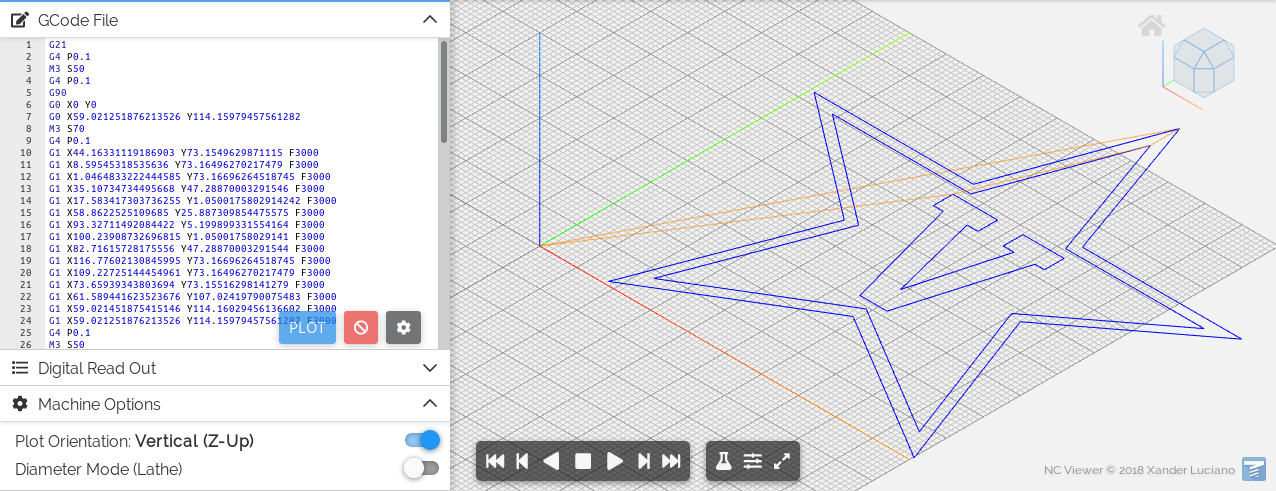3.7 KiB
Basement Ooza Basics
The hacked together pipeline is as follows given an svg $SVG. You may use the Woodbine.svg file as an example for testing.
- Ensure that your SVG has a size set that fits in Ooza
- One way to ensure is by setting width & height on the root
<svg>element
- One way to ensure is by setting width & height on the root
- Covert the SVG to gcode via
cargo run --release -- $SVG -o $OUTFILE - Rewrite the gcode to center where the print happens via
python rewritegcode.py $OUTFILE $UPDATEFILE - (Optional) Verify the maximum x & y values fit on the board via
python parsegcode.py $UPDATEFILE - Generate the final file by concatenating the header to the updated file via
cat ooza/config.g $UPDATEFILE > $FINALEFILE - Upload
$FINALFILEto Jobs in Duet and run it
svg2gcode
Convert vector graphics to g-code for pen plotters, laser engravers, and other CNC machines
Usage
Web interface
Check it out at https://sameer.github.io/svg2gcode. Just select an SVG and click generate!
Command line interface (CLI)
Input
cargo run --release -- examples/Vanderbilt_Commodores_logo.svg --off 'M4' --on 'M5' -o out.gcode
Output, rendered at https://ncviewer.com
cat out.gcode
Library
The core functionality of this tool is available as the svg2gcode crate.
Blog Posts
These go into greater detail on the tool's origins, implementation details, and planned features.
FAQ / Interesting details
-
Use a 3D printer for plotting: (thanks @jeevank for sharing this) https://medium.com/@urish/how-to-turn-your-3d-printer-into-a-plotter-in-one-hour-d6fe14559f1a
-
Convert a PDF to GCode: follow this guide using Inkscape to convert a PDF to an SVG, then use it with svg2gcode
-
Are shapes, fill patterns supported? No, objects must be converted to paths in Inkscape with
Object to Pathfor use with this program. See #15 for more discussion.


